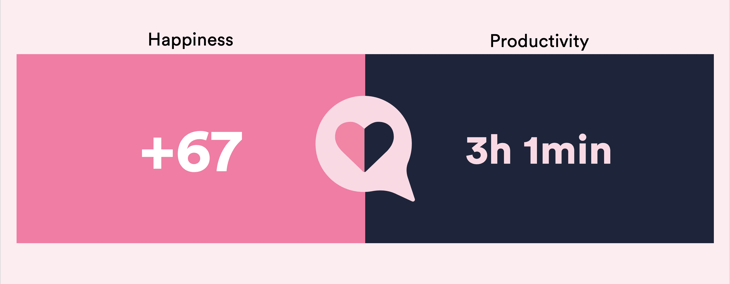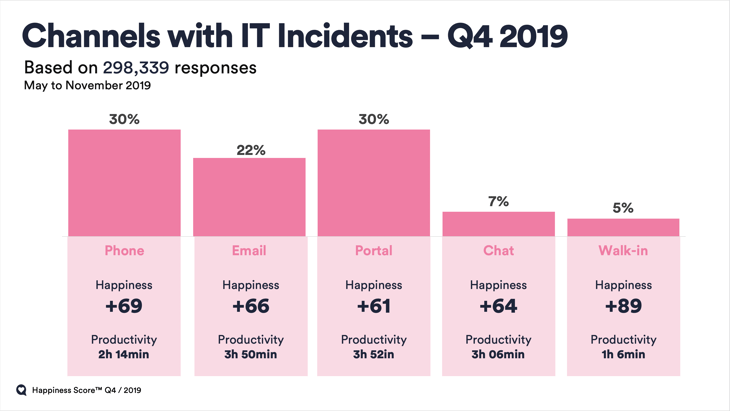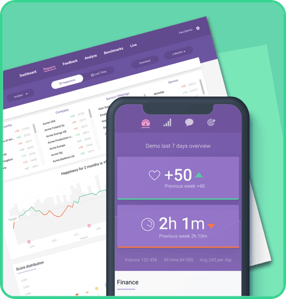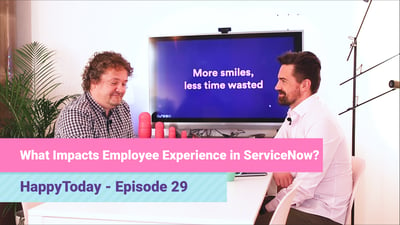As an IT service desk manager, you’re probably often caught between a rock and a hard place.
There’s the steady increase in workload – thanks to the growing corporate reliance and spend on technology – while the corporate IT strategy is often to reduce IT support costs year on year (or at least to limit budget growth).
Something just doesn’t add up. Especially when the business-level impact – in terms of lost employee productivity – is considered. For instance, do dollars saved in IT support costs cause a financial loss in employee productivity and, ultimately, business revenues or profit?
Employee Experience Holds the Answer (and More)
Now in 2020, with a growing focus on the importance of employee experience in IT support, it’s finally time to understand the “bigger picture” – that while IT service desks need to be efficient, they also need to be truly effective in meeting business needs. Importantly, "meeting business needs" is not just regimentally enacting IT service management (ITSM) processes and hitting perhaps arbitrary service level agreement (SLA) targets.
This blog explains how you can justify the use of employee experience measurement to not only improve employee experience (of your service and support capabilities) but to also deliver greater value to the organisation by increasing employee productivity.
Employee Experience is More Than “Happy Employees”
While having happy employees is a truly great thing, and more and more people are agreeing with Richard Branson’s view that:
“Clients do not come first. Employees come first. If you take care of your employees, they will take care of the clients.”
There’s more to employee experience than employee happiness with the work environment and everything it involves (including IT support).
The Adverse Employee-Productivity Impact of “Suboptimal” IT Support
It might be poor support, but I choose to call it “suboptimal” support because I don’t believe that anyone comes into work to do a bad job. Instead, think of this as many IT service desks being limited by what they know about their performance and the impact – both positive and negative – it has on the employees they serve.
I appreciate that most IT service desks will already operate some form of customer satisfaction mechanism – but how well does your customer satisfaction score reflect your performance?
I could list a number of flaws with traditional customer satisfaction mechanisms (and how they offer a false sense of security) but I think the image below will provide far greater insight into where many IT support organisations are right now. (And please appreciate that these values reflect both newer HappySignals customers, who are just starting out on their employee experience journey, and those who have already improved their service and support capabilities significantly).

Source: HappySignals Happiness Score™ report
(Based on 298,339 responses, May to November 2019)
There are two very useful views of this employee experience data for your organisation
Firstly, there are the overall employee experience scores – such as the average of +67 for happiness and 3h 1m lost productivity. Even higher scores are achieved by our customers who’ve already significantly improved their employee experience. It offers up the scope for improvement on two levels – reaching the benchmark set through HappySignals users, to then getting as good as you need to be.

Source: https://www.happysignals.com/happiness-score/
Then secondly, there’s the channel-by-channel view shown above. Please note how poor the self-service portal experience is – it has the lowest employee happiness score and employees lose more productivity (on average) than email. It’s definitely not a great result from an IT-support investment that was made to speed up resolutions, improve the employee experience, and to ideally save costs.
Both of these views can be used to drive IT and business-level improvements.
If you are interested to find out more data, such as IT request via different channels and negative, neutral and positive factors that lead to employee happiness, then download our Happiness Score™ report here.
Viewing Employee Experience from the Business Perspective
Here’s a quote from one of our customers that nicely articulates the “art of the IT-support improvement possible”:
“The lost productivity per ticket has now been going down month after month during the last 6 months. In the end of November 2019, our customers were losing on average 30min less time per ticket than they lost at the end of Q4 2018.”
This reduction in lost employee productivity over time can be quantified – and it’s where the business case for employee experience management often starts.
As employee experience increases, the lost productivity decreases – with a real business cost associated with that lost productivity. Our aggregated customer data to date shows that ten points in happiness equate to about an hour of lost productivity – and it works in either direction:
- Increased happiness = greater employee productivity
- Decreased happiness = lower employee productivity
Creating the Business Case for Employee Experience Management
This business case doesn’t need to be extensive. Instead, it can start as a one-pager that succinctly explains why employee experience measurement is important to your IT service desk and the wider organisation, the costs of (as-a-minimum) trialing employee experience management, and the expected financial and non-financial benefits of doing so.
If we take customers who have used HappySignals for more than a year these customers have been able to increase the productivity of end-users by 26%. That means 47 minutes per ticket. If the average cost of hour would be 50€ that means for 10,000 tickets the saving is €390,000 per year (10.000 * 47/60 *50€).
That saving is nearly double the cost of handling the ticket in the first place. Plus, of course, the employees are ten-points happier with IT too.
Alternatively, you view this from a negative perspective. Let’s say that an IT cost reduction strategy has reduced the ticket handling cost by USD 1 and causes an increase in employee lost productivity of just 15 minutes (likely due to fewer available IT support staff), then this could cost the organisation up to USD 14 per ticket in non-IT costs.
In fact, it might be that you first use employee experience management to defend the existing IT support budgets before then seeking to grow them in further optimising the business value of the IT service desk.
If you want to create a business case, we are happy to help! Book a meeting here.






